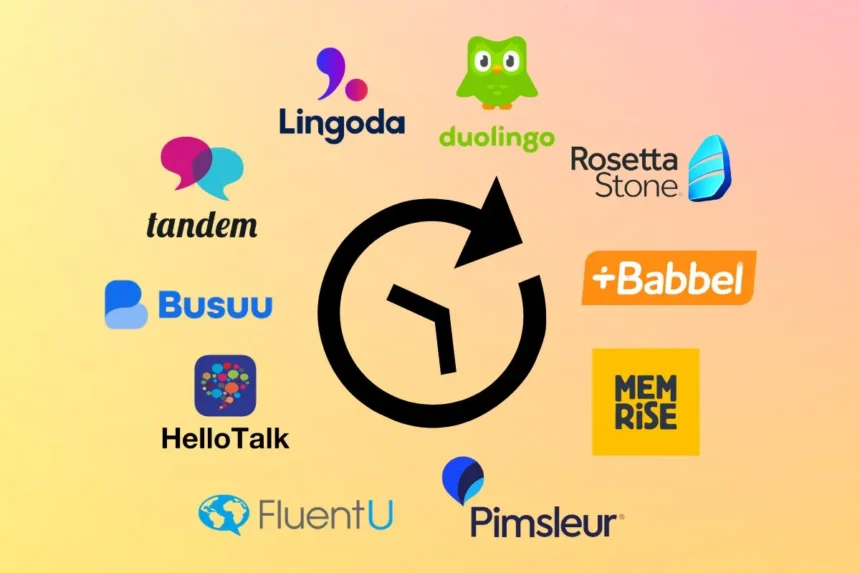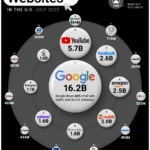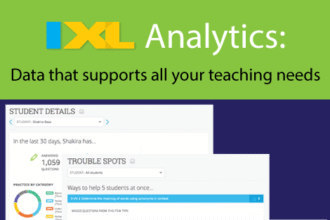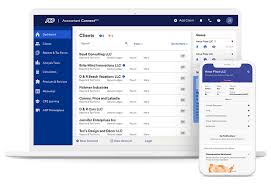In the relentless flood of digital communication, how do certain messages cut through the noise? How do brands, especially those in the rapidly expanding sphere of online learning, capture attention, build trust, and ultimately persuade users to engage, subscribe, or purchase? The answer often lies not just in what is said, but precisely how it’s said. Language, wielded with psychological precision, is the invisible architect of persuasion.
Today, we delve into the fascinating intersection of advertising, psychology, and language, using the dynamic landscape of online learning platforms as our primary case study. These platforms, from those offering free online learning resources to premium online education learning experiences, are masters of linguistic strategy. By dissecting their techniques, we can uncover powerful lessons applicable to any business seeking to connect more effectively with its audience. This isn’t just about selling courses; it’s about understanding the deep-seated psychological triggers that language can activate.
The digital world offers unparalleled opportunities for growth and knowledge acquisition. Whether you’re looking for free online courses, aiming to master python learning online, seeking english learning online, or exploring professional development like cpa online learning, the language used by providers shapes your perception and decision-making process profoundly. Let’s explore the subtle, yet powerful, ways language influences perception in the realm of digital education and beyond.
The Unseen Influence: Core Psychological Principles in Advertising Language
Before we dive into the specifics of online learning platforms, it’s essential to ground ourselves in the fundamental psychological principles that effective advertising language leverages. Robert Cialdini’s seminal work, “Influence: The Psychology of Persuasion,” outlines six key principles, all deeply rooted in how language is used:
- Reciprocity: People feel obliged to give back when they receive something first. In advertising, this translates to offering free value – a free trial, a downloadable guide, a sample lesson. The language used emphasizes the generosity: “Get your free introductory module,” “Download our expert insights, no strings attached.” This initial offering, framed through inviting language, primes the user for a future exchange. Many platforms offering free online learning rely heavily on this principle to build initial user engagement.
- Scarcity: Things appear more valuable when their availability is limited. Language taps into this by highlighting limitations: “Limited time offer,” “Only 3 spots remaining,” “Ends midnight tonight!” This creates a sense of urgency, pushing potential customers to act quickly before missing out. Online course providers often use phrases like “Early bird discount ends Friday” or “Enrollment closes soon” to drive immediate action for their online learning courses.
- Authority: People tend to follow the lead of credible, knowledgeable experts. Advertisers establish authority through language that denotes expertise, credentials, or endorsements. Phrases like “Taught by industry leaders,” “Certified professionals,” “Developed by Harvard researchers,” or highlighting specific qualifications (like those needed for cpa my online learning programs) lend weight to the offering. Testimonials from recognized figures or institutions amplify this effect.
- Consistency: People like to be consistent with things they have previously said or done. Persuasive language can trigger this by encouraging small, initial commitments. Getting someone to sign up for a newsletter, download a free resource, or join a free webinar creates a small commitment. Follow-up language might then reference this initial action: “As a valued subscriber, you’ll want to know about…” This makes the user more likely to agree to larger commitments later, aligning with their previous behaviour. Platforms that encourage users to build a my online learning profile often leverage this principle.
- Liking: People are more easily persuaded by people or brands they like. Likability is built through similarity, compliments, and cooperation. Advertising language achieves this through a friendly, relatable brand voice, acknowledging user needs (“We know managing your schedule is tough…”), offering compliments (“You’re ready to level up your skills!”), and emphasizing shared goals. A welcoming tone is crucial for platforms offering online education learning to diverse audiences.
- Social Proof: People tend to do things they see other people doing. Language that highlights popularity or consensus taps into this powerfully. “Join millions of learners,” “Our most popular course,” “See what others are saying…” – these phrases leverage the innate human tendency to conform and trust the collective wisdom. User-generated content, reviews, and ratings are linguistic manifestations of social proof, crucial for online learning platforms.
Understanding these foundational principles provides the framework for analysing the specific linguistic tactics employed by online learning providers.
The Digital Classroom: The Explosive Growth of Online Learning Apps
The past decade has witnessed an unprecedented surge in online learning. Fueled by technological advancements, changing workforce demands, and the need for flexible education, online learning platforms have moved from a niche alternative to a mainstream educational powerhouse. This sector encompasses a vast range of offerings:
- MOOCs (Massive Open Online Courses): Platforms like Coursera and edX offer university-level courses, often free to audit but charging for certificates or degrees.
- Skill-Based Platforms: Sites like Udemy, Skillshare, LinkedIn Learning, and Codecademy focus on practical skills for career development, covering everything from learning python to digital marketing.
- Language Learning Apps: Duolingo, Babbel, and Memrise use gamification and bite-sized lessons for language learning online.
- K-12 and Supplemental Education: Platforms like IXL Learning and Khan Academy provide resources for younger learners, while others offer tutoring and specialized subject help like maths online.
- Professional Development: Specific portals cater to industries, offering courses for certifications like CPA online learning or compliance training like learning online qld health.
The sheer diversity highlights the adaptability of online education learning. The success of these platforms isn’t solely due to accessible technology; it’s heavily influenced by how they communicate value. They must constantly attract new users, retain existing ones, and convince them to invest time and sometimes money. This makes them prime examples of sophisticated language-based persuasion. Whether it’s a free online learning platform or a paid service, the words used are meticulously chosen.
Dissecting the Digital Dialogue: Linguistic Tactics of Online Learning Apps

Let’s break down the specific language strategies employed by online learning platforms, drawing lessons relevant far beyond the EdTech sector.
1. The Art of the Hook: Grabbing Attention with Benefit-Driven Language
The first hurdle is capturing attention. Online learning platforms excel at this by immediately focusing on the benefit to the user, not just the feature.
- Feature: “We offer 500+ video courses.”
- Benefit-Driven Language: “Unlock your potential with access to over 500 expert-led courses.” or “Master in-demand skills and boost your career.”
This approach transforms a passive description into an aspirational promise. Notice how words like “unlock,” “potential,” “master,” “boost,” and “career” evoke positive outcomes. This is crucial for attracting users seeking online education learning for tangible results. Even platforms offering free online courses use this, framing the free access as a “gateway” or “opportunity” to gain valuable skills.
- Example: Duolingo doesn’t just say “Learn Spanish”; it says “Learn Spanish Free” and emphasizes quick, daily progress with motivating messages.
- Lesson: Frame your product or service not by what it is, but by what it does for the customer. Focus on the transformation, the solution, the aspiration.
2. Building Trust Through Credibility Markers
In a space often saturated with options, trust is paramount. Online learning platforms use language to signal reliability and expertise:
- Credentials and Affiliations: Mentioning partnerships with universities, industry certifications (e.g., “Get certified by Google,” “Prepare for your CPA Australia exam”), or endorsements from known experts. Language like “Learn from world-class instructors” or “Accredited by…” builds instant credibility. This is vital for professional courses like cpa online learning.
- Testimonials and Social Proof: Integrating user quotes, star ratings, and user counts (“Millions trust us…”) serves as powerful linguistic social proof. Phrases like “See why thousands switched to…” or “Hear from our successful graduates…” leverage peer validation. This is key for establishing trust on online learning platforms.
- Transparency: While often subtle, language can signal transparency. Clearly outlining course structures, learning outcomes, and pricing builds confidence. Honesty about prerequisites (“No prior experience needed!”) removes barriers.
- Example: Coursera prominently displays university logos and instructor credentials. LinkedIn Learning highlights the professional background of its course creators.
- Lesson: Identify your credibility markers – expertise, user success, partnerships – and weave them into your messaging using clear, confident language.
3. The Power of Framing: Choice, Control, and Personalization
Effective communicators frame choices and experiences in ways that empower the user. Online learning often uses language that emphasizes user control and personalization:
- Personalized Paths: Phrases like “My online learning journey starts here,” “Create your custom learning plan,” or “Recommended for you based on your interests” make the experience feel tailored. This sense of ownership increases engagement.
- Empowering Language: Instead of directives, use suggestive or enabling language: “You can start learning today,” “Explore your options,” “Discover your next skill.” This respects user autonomy.
- Goal Orientation: Language often focuses on achieving user goals: “Achieve fluency,” “Land your dream job,” “Master data science.” This aligns the platform’s offering with the user’s aspirations.
- Example: Platforms often greet users with personalized dashboards, using language that reflects their chosen courses or progress, reinforcing the “my online learning” concept. Apps like O’Reilly online learning allow users to curate personal bookshelves.
- Lesson: Frame your offerings around user empowerment, personalization, and goal achievement. Use language that puts the customer in the driver’s seat.
4. Gamification and Motivation: Keeping Learners Engaged
Many online learning platforms, especially language and K-12 focused ones, use gamification. The language accompanying these features is crucial for motivation:
- Progress and Rewards: Phrases like “Keep your learning streak alive!” “Level up!”, “Earn badges,” “Congratulations, you’ve completed Module 1!” provide constant positive reinforcement.
- Friendly Competition: Leaderboards or challenges might use language like “See how you rank” or “Challenge your friends.”
- Encouraging Nudges: Gentle reminders like “Ready for your next Spanish lesson?” or “Don’t forget your daily coding practice!” use conversational language to maintain momentum.
- Example: Duolingo’s famous streak counter and encouraging notifications are prime examples. Kahoot! uses gamified quizzes with celebratory language. IXL Learning uses progress bars and awards for achieving milestones.
- Lesson: Use language that celebrates progress, encourages persistence, and makes the learning journey feel rewarding and fun, even for complex topics like learning python.
5. Addressing Specific Needs and Pain Points
Sophisticated advertising language anticipates and addresses specific user needs or pain points. Online learning platforms do this effectively:
- Problem/Solution: Identifying a common frustration and positioning the course as the solution. “Struggling with Python syntax? Our course makes it simple.” “Need to improve your business English? Master professional communication online.”
- Targeted Keywords: Using language that resonates with specific search queries. This includes terms like english learning online, learning spanish online, maths online, ai courses online free, or niche professional development like cpa online learning. This ensures the platform appears relevant to users actively seeking solutions.
- Overcoming Objections: Proactively addressing potential concerns. “Learn at your own pace – no pressure.” “Affordable courses designed for your budget.” “No prior coding experience needed for this python learning online course.”
- Example: Platforms offering free online courses often address budget concerns directly. Specialized platforms address specific skill gaps relevant to industries or professions. Sites offering arabic to english translation online or urdu to english translation online services speak directly to communication needs.
- Lesson: Understand your audience’s specific challenges and desires. Use language that mirrors their concerns and clearly articulates how you provide the solution they seek.
6. The Allure of “Free” and Value Perception
The word “free” is a powerful persuader. Free online learning platforms leverage this extensively, but the language around value is critical even for paid offerings:
- Freemium Models: Offering basic access for free, with language encouraging upgrades for more features: “Go Premium for unlimited access,” “Unlock advanced tools.”
- Free Trials: Language emphasizes risk-free exploration: “Start your 7-day free trial today,” “Experience the full platform, risk-free.”
- Value Stacking: Listing multiple benefits to justify the price: “Includes lifetime access, downloadable resources, and expert Q&A sessions.”
- Discount Framing: “Save 50%,” “Limited-time discount,” “Special introductory price.”
- Example: Alison online learning offers a vast library of free courses, focusing on accessibility. Paid platforms often use introductory discounts or bundle offers.
- Lesson: Use “free” strategically, but always focus on the perceived value. Clearly articulate the benefits users receive, whether free or paid, to justify the exchange.
7. Clarity and Simplicity: Making Complex Topics Accessible
Especially for technical subjects like what is machine learning or programming languages, clear and simple language is vital.
- Avoiding Jargon (Initially): Introducing complex concepts with analogies or simplified explanations before diving deep.
- Structured Learning: Language that emphasizes a step-by-step approach: “Start with the basics,” “Build your knowledge progressively,” “Module-by-module learning.”
- Action Verbs: Using clear, action-oriented language to describe learning activities: “Build,” “Code,” “Analyze,” “Create,” “Design.”
- Example: Codecademy breaks down coding concepts into digestible interactive lessons. Many AI courses online free start with foundational principles explained in layman’s terms.
- Lesson: Ensure your language clarifies rather than confuses. Make complex subjects seem approachable and manageable through structured, clear communication.
Beyond EdTech: Universal Lessons for Advertising Language
The strategies employed by online learning platforms are not confined to the digital education space. They offer profound insights for any business aiming to improve its advertising communication:
- Know Your Audience’s Psychology: Understand the core human desires and cognitive biases (like those Cialdini outlined) that influence decision-making. Tailor your language to trigger these principles appropriately and ethically. Are they seeking status (Authority)? Security (Scarcity)? Belonging (Social Proof)?
- Focus Relentlessly on Benefits: Translate features into tangible benefits for the customer. Instead of saying “We have advanced analytics,” say “Gain deeper insights to make smarter decisions.” Let the user envision the positive outcome.
- Build Trust Explicitly: Use testimonials, expert endorsements, data, and transparent communication. Your language should convey competence, reliability, and honesty. If you offer online courses Australia, highlight local accreditation or testimonials from Australian professionals.
- Empower and Personalize: Use language that gives customers a sense of control and choice. Acknowledge their individual needs and aspirations. Phrases like “My online learning” resonate because they speak to personal ownership.
- Leverage Social Proof: Don’t underestimate the power of showing that others trust and value your offering. User numbers, reviews, and case studies are powerful linguistic tools.
- Master the Art of “Free” and Value: Whether offering free trials, samples, or introductory content, ensure the language emphasizes the value received. Clearly articulate the benefits of upgrading or purchasing.
- Simplify Complexity: Break down complex products or services into easily understandable language. Use analogies, clear structures, and action-oriented verbs. This is crucial whether explaining what is machine learning or the benefits of a financial service.
- Create Urgency (Ethically): When appropriate, use scarcity and time-limited offers to encourage timely decisions, but avoid manipulative tactics. Genuine limitations or introductory pricing can be effective.
- Maintain a Consistent Brand Voice: Whether authoritative, friendly, or inspiring, the tone of your language should be consistent across all platforms, reinforcing brand identity. This applies whether you’re offering online learning NSW specific programs or global tech courses.
The Future is Fluent: Evolving Language in Digital Persuasion
The landscape of digital communication is constantly evolving. Trends like hyper-personalization, AI-driven content generation, and the increasing importance of video and interactive elements mean that advertising language must adapt.
- AI and Language: Artificial intelligence is already being used to analyze vast datasets and generate ad copy variations. Future applications might involve dynamically tailoring language in real-time based on user profiles and behaviour. Understanding concepts like deep learning and online machine learning is becoming relevant even for marketers analyzing ad performance.
- Micro-learning and Micro-copy: As attention spans shorten, concise, impactful language (“micro-copy”) in user interfaces, notifications, and short-form content becomes critical. Think of the small prompts in apps like doodle learning or widgit online.
- Authenticity and Values: Increasingly, audiences respond to brands that communicate authentically and align with their values. Language that reflects genuine purpose and ethical considerations will gain prominence.
- Blended Approaches: Combining digital reach with human interaction (blended learning models) requires careful linguistic transitions between automated and personalized communication.
However, amidst these technological shifts, the core principles of psychological persuasion through language remain remarkably stable. Understanding how to connect with human emotions, motivations, and cognitive processes will always be the bedrock of effective communication. Whether navigating online learning platforms or choosing a consumer product, the underlying psychological triggers activated by language persist.
Conclusion: Speak the Language of Influence
The world of online learning provides a rich tapestry of examples demonstrating the potent psychological effects of language in advertising. From the initial hook emphasizing aspirational benefits to the subtle nudges that maintain engagement, these platforms masterfully weave words to attract, persuade, and retain users.
By applying the lessons learned – focusing on benefits, building trust, empowering users, leveraging social proof, framing choices effectively, and simplifying complexity – businesses across all sectors can significantly enhance their persuasive power. The key lies in moving beyond simply describing what you offer, to articulating the value and transformation you provide, using language that resonates deeply with the psychological drivers of your audience.
Whether you are developing online education learning programs, selling software, or offering a local service, mastering the psychology of language is not just a marketing tactic; it’s fundamental to building meaningful connections and achieving lasting success. Start observing the language around you – in the apps you use, the ads you see, the emails you receive – and begin applying these powerful principles to your own communication strategy. The results might just surprise you.












